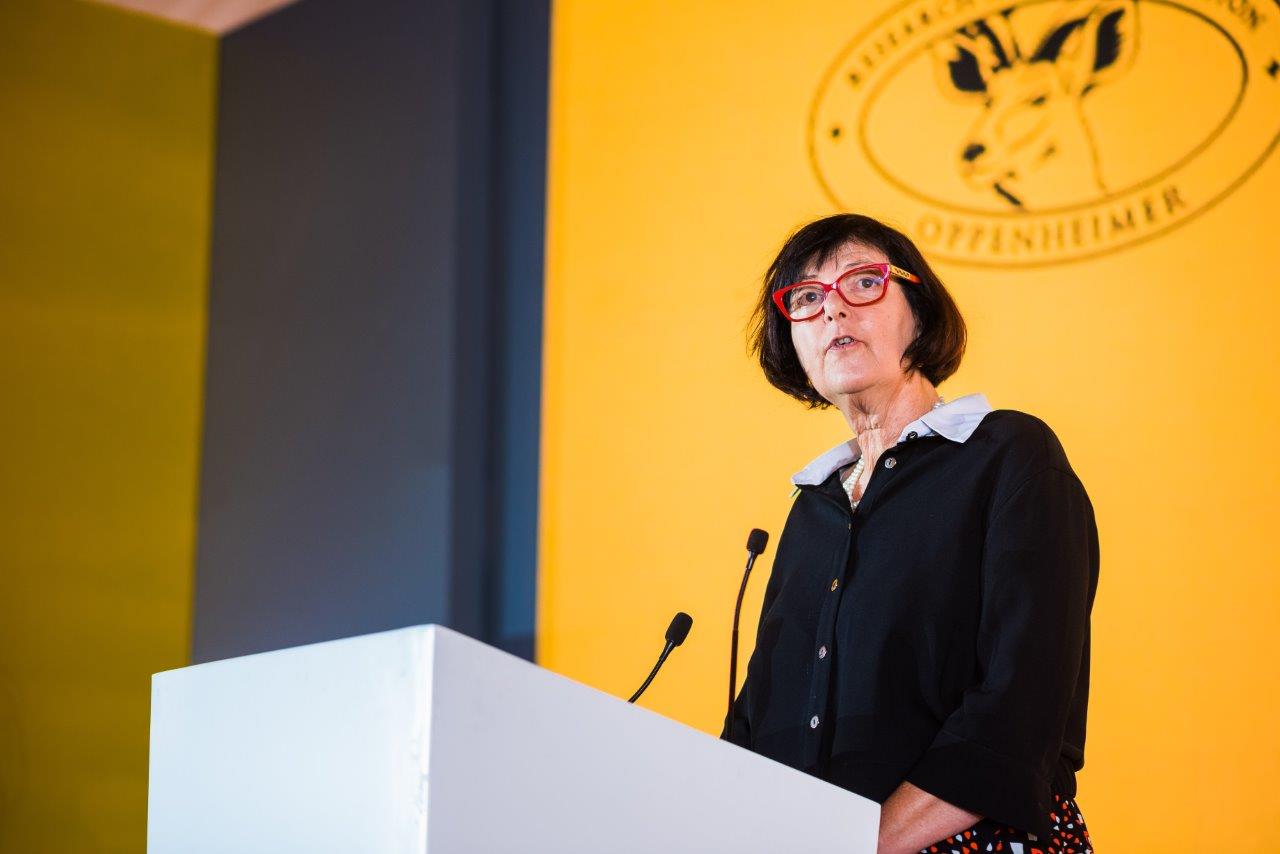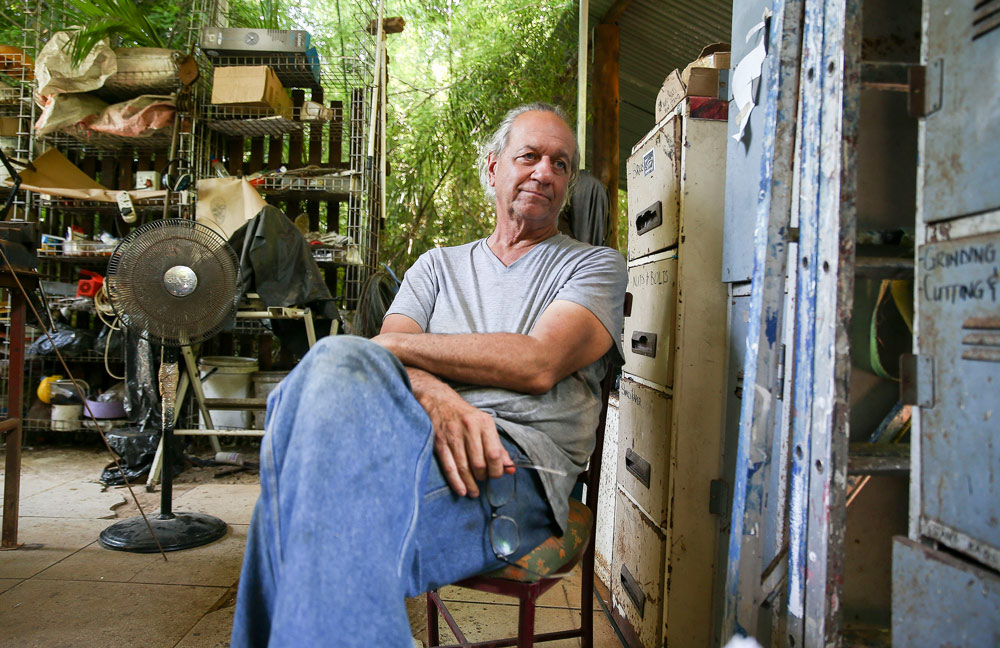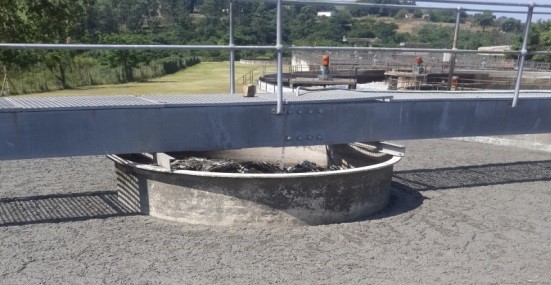Fossil finder Lee Berger recalls personal journey as world awaits ground-breaking new find.
Can old bones in dark caves provide fresh inspiration for conservationists? World-renowned paleoanthropologist Professor Lee Berger certainly thinks so.
by Matthew Hattingh and Fred Kockott
Paleoanthropologist Professor Lee Berger is on the brink of publishing ground-breaking discoveries related to recent fossil finds at the Cradle of Humankind, in Gauteng.
The National Geographic Explorer-in-Residence and Wits University Professor is famous for studies into early hominids, including our ancient relative Australopithecus sediba.
He was speaking to more than 380 African and global scholars at the opening of the Oppenheimer Research Conference in Johannesburg on Wednesday.
Initiated in 2010, the three-day conference aims to stimulate new knowledge and an exchange of ideas in conservation, sustainability and research.
‘Scepticism’
Berger told delegates, mainly from the life sciences and conservation, how his own field had been “devastated by scepticism” but in more recent years has made “transformational discoveries”.
“What is the lesson from this for you? Mine was a science that had no hope, that had finished, that was over … We had quit exploring and discovering,” said Berger.
He quoted Nicky Oppenheimer, the conference’s patron, who in his welcome address spoke about the importance of researchers sharing ideas with others from “outside your coterie” .
“Very often what sits directly in front of your face one cannot see,” said Oppenheimer. “We need to look out the window and walk out the room and interact with people from different walks of life.”
Real world
Oppenheimer also spoke about the strides made in Southern African conservation and the willingness of its people to tackle unpleasant, real-world problems.
“In the Western world conservation is all too often somewhat of a fiction… a Disney vision of the real world,” said Oppenheimer. “Some very unpleasant things happen in the world and in the conservation areas where we operate. You acknowledge this and have to be able to face up to those and make that part of your research and deliberations.”
And amid the vast loss of true wilderness space, conservationists had vitally important roles to play, he added. But it was important to know that that humanity cannot bend nature to its will.
“After all the real world has been out there longer than any of us, even far long before Lee’s way back looking things. Because it has been there so long, it has been successful and we need to learn from that.”
In the beginning . . .
Berger said that prior to the startling fossil finds at the Malapa and Rising Star Cave system in the Cradle of Humankind, paleoanthropology had been in the grip of a pervading view that all the big discoveries in the study of early hominids had been made.
That was just 15 years ago, he said.
“We are now in the midst of the greatest age of exploration,” he said.
He revealed how later finds made at the caves provided evidence that our Homo sapiens forebears were far from being the sole hominids capable of some of the complex behaviours we associate with them.
Findings of extensive fossils from as recently – in archaeological terms – as 250 000 years ago suggest the smaller-skulled Homo naledi (contemporary to Homo sapiens) may have been interring their dead in caves.
Homo naledi
“We had a find creature that didn’t fit,” said Berger, speaking of a “changed paradigm”.
“There sat naledi out of time and place doing something incredibly complex,” he said.
Details of his fresh findings in these same caves, during and after the Covid lockdown, cannot be disclosed pending publication in a peer-reviewed journal.
So Berger regaled delegates with anecdotes of his personal and professional journey to becoming one of the world’s most prolific fossil finders — alongside a growing team, including his own son, Matthew, and his daughter Megan.
Wearing a broad-brimmed hat, which lent the Kansas-born scientist a vaguely Indiana Jones aspect, Berger said at time he entered the field in “there were literally more scientists than there were objects that we studied.”
“This made it an incredibly competitive field. It made a violent field in the area of science where people fought over what they thought were the scarcest objects on the planet,” said Berger.
Teeth
So his discovery, early in his career in 1991, of two fossil hominid teeth in Galdysvale Cave in the Cradle of Mankind, brought him world headlines.
“I thought I would be able to dine out at cocktail parties for the rest of my life,” Berger quipped.
But 17 years later and a big discovery continued to elude him.
Things had come to such a pass that he was sitting on the Wits selection committee to find his replacement – someone with the technical know-how to analyse earlier finds. Around this time, at home during a period of introspection, Berger recalls his belated “discovery” of Google Earth, the online satellite and aerial photography program.

He hauled out a box of inconclusive satellite mapping work he had done in the 1990s “using brand new technology – hand held GPS and satellite maps that cost $10,000 per image from NASA”.
The view from space
When he punched in this old data into Google Earth he discovered that “every one of my GPS coordinates was wrong because, of course, the US government, which owned the satellite thing, had put in deliberate errors into them.”
In correcting these errors, Berger got to view what the caves look like from space and began to see patterns at the Cradle of Humankind World Heritage Site that had slipped his notice over many years of work there.
He returned to the field and on the first day found 21 new sites “in the most explored caves system in the world”.
In August 2008, Matthew, then aged nine, made one of the earliest and most important discoveries – the fossils of a collarbone and a jawbone embedded in a rock. The boy had found a near-partial skeleton. At the time only six had been found.
Ground-breaking finds
Numerous sites and bones were subsequently discovered and with his collaborators, Berger’s articles appeared in three special editions of the prestigious journal, Science. These included a description of what they called a new species, Australopithecus sediba, which had a mixture of primitive and modern characteristics.
In 2013, two of Berger’s recruits, amateur cavers Rick Hunter and Steven Tucker, discovered bones in a remote chamber at the end of an extremely narrow chute in the Rising Star Cave system. Matthew followed them down a little later.
“They took pictures and when I saw the first one I couldn’t believe it… all the fragments were hominid… that’s a skull,” he told the conference delegates.
Later that evening, after the celebrations, Berger telephoned Terry Garcia, a then National Geographic executive, and secured some funding to support further work. But there were limits, so Berger put out an appeal on Facebook.
Search for skinny scientists
He was looking for skinny scientists prepared to risk their lives worming their way down the narrow chute. Oh, and there would be no pay.
Sixty-four applications, all from qualified scientists, landed on his desk and the number of followers on his Facebook page would eventually reach almost one million as more discoveries emerged.
And in another possible lesson for the life sciences, he shared how his teams had been applying new technology to “look into space in new ways”, including robots and artificial intelligence.
Covid-19 had proved instructive too.
“I started using young South African researchers because my [overseas] scientists couldn’t fly out,” said Berger. These young researchers were empowered into higher positions.
“And you know what, they thrived. They thrived in those leadership positions and I realised we had in some ways actually been blocking (access to this field) by creating this global open access.
Covid times
He said during Covid, theirs was the only paleoanthropologist team in Africa and at times perhaps in the world, still working in the field.
“And we made another extraordinary discovery – one the richest a hominid sites in the world,” said Berger. “Well over 100 individual fossil remains so far, and that number is just increasing constantly. And we have better things coming which you are going to be hearing about in just a few months,” said Berger.
Berger shared videos and stills with the conference of a narrow chute (“that hurts a lot I assure you”) as well as the exhausting 140m of caves the volunteers had to negotiate in their search for fossils.
Berger said with his 57th birthday looming this December (2022) he had been determined to get into the chamber and to this end had lost over 20 kg, enabling him to also descend down that narrow chute ten weeks ago.
“It’s the worst thing I have ever done in my life. It was absolutely horrible until I got into the chamber. And then we started making discoveries.”

The world awaits
“And what I want to tell you is this: We are on the verge of the most extraordinary period of science ever,” said Berger. “We have made transformational discoveries because we have continued to explore, because we keep going back into these spaces, often as Nicky (Oppenheimer) said, that were right in front of your face.”
Replying to a question from the floor about the possibility of obtaining bio-molecules like DNA and proteins from the find for analysis, Berger was unequivocal. “Better than good. I am supposed to make a call to colleagues in Scandinavia who have successfully recovered… but I don’t know what the results are yet. So yes, very good.”
Another questioner made no bones about Berger’s reticence to go into details about his recent finds. “You are being very coy. Do they involve fire and tools, however primitive they are?” she wanted to know.
But the Wits bones man batted off his inquisitor with a chuckle: “Yes. That’s all.”
- This article, commissioned by Jive Media Africa, was first published by Daily Maverick. It is free to republish provided the story is used without changes to the text, including captions. It must also include the Roving Reporters story byline and a link back to this post.
NOW READ: Conservation science must empower people, says Barbara Creecy
The environment minister tells top African conservation scientists to up the game in researching ways to ensure that biodiversity conservation also leads to socioeconomic empowerment.














